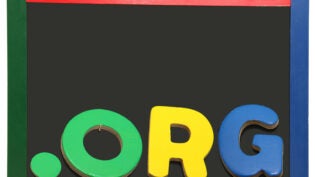
Nowadays, consumers are faced with more choices and products than they could ever imagine before. To protect themselves and their wallets, consumers have inevitably developed a reflex for saying “no” more than “yes.” But as a salesperson, if you’re absolutely certain that the consumer would benefit from your product or service, how can you overcome their countless nos and get to a yes? The answer to that is objection handling.
What Are Objections?
First of all, what are objections? In the business world, sales objections are when a potential customer has a legitimate concern about a product or service that they believe prevents them from purchasing.
Rather than simply bulldozing over the prospect’s “no,” objection handling is when the attending sales professional listens to these concerns and responds to alleviate and reassure them through logic and reasoning. Through objection handling, the prospect and sales representative can hopefully reach a mutual understanding of the value of the product, and the prospect will hopefully be convinced to make a purchase.
Objection handling is important because over 60% of customers say “no” four times in a sales conversation before saying “yes,” according to Invesp. In other words, if a salesperson shuts down and backs off after a single “no,” they’d be losing out on a large portion of potential sales revenue.
The art of how to overcome sales objections is difficult, but to get you started, you’ll start to notice common trends in objectives that make responding easier. To help you gain your footing, here are the four most common types of objections and how you can prepare to overcome them.
Budget Objections
There are four main criteria customers go through when deciding whether to purchase a product or not: budget, authority, need, and timeframe. Naturally, then, the most common objections that prospective customers have to a purchase revolve around these four criteria.
The most common objection is a budget objection. In this, the potential customer claims that they don’t have enough money to make a purchase, or that your price point is too high for them.
Here are a few different ways this might manifest:
- “It’s too expensive!”
- “X company sells the product for cheaper.”
- “We don’t have the budget.”
To overcome budget and pricing objections such as these, the trick is to not focus on the pricing at all. Instead, focus on your value proposition – how much money it will save them over time and the feeling of relief they’ll experience after using it. Rather than a cost, frame your product as an investment whose ROI makes it well worth the initial price!
Now, in some cases like the last example, the customer genuinely might not have the money on hand to make the purchase. In that case, you may want to explore installment payment options or monthly subscription options. While a discount might get them to say yes faster, remember that as a salesperson, you should try to preserve your sales margins as much as possible.
In other cases, prospects might claim they have a budgetary objection because they think it’s the fastest way to get rid of a salesperson. To see if they genuinely have a budget objection or not, ask them: “If money weren’t an issue, do you see yourself purchasing this product?”
Authority Objections
Next up are authority objections, where the prospect claims that they don’t have the authority to make purchases. This might be because they need to run it past a spouse, family member, boss, or purchasing group.
Some common manifestations of authority objections are:
- “You’re talking to the wrong person.”
- “I’m not authorized to sign off on this.”
- “There’s no way the rest of the organization will accept this.”
In cases where the person you’re talking to genuinely lacks the authority to make the purchase, ask them for the name of the relevant purchasing manager and see if they can put in good word for you.
In other cases, the other person might have purchasing authority, but doesn’t think they can justify the purchase to their decision-making partners. In those cases, it’s your job as a salesperson to help your client assemble a good case for the purchase and overcome their partners’ objections as well. Once everyone is on board with your product’s value, the deal can go forward.
Need Objections
A need objection is arguably the most crucial to overcome – after all, without a perceived need for your product, consumers will never purchase it!
Some forms of need objections could be:
- “We’re happy with the way we do things right now.”
- “We’re using a competitor’s product.”
- “I don’t think your product can be useful to us.”
To begin overcoming these sorts of objections, you’ll need more information. Ask more about what sort of solution the prospect is using right now, and try to hone in on details where your product could do it better.
In other words, focus on tailoring your product’s value proposition to their unique scenario, and framing it as an upgrade to what they have at the moment. While their company might not crumble to the ground without your product, show them that purchasing it will raise them to new heights.
Timeframe Objections
The final type of objection is a timeframe objection, where your prospect recognizes that there’s a problem to be solved but doesn’t think the issue needs solving at this exact moment.
Some common timeframe objections you might hear are:
- “It’s not a concern right now.”
- “We don’t have the capacity to implement this now.”
- “I’m too busy right now.”
To begin overcoming these sorts of timeframe objections, use your creative skills to paint a picture of what might happen if the situation is allowed to deteriorate further – the dollar sales your client might lose out, potential damages that might occur, or other disasters waiting to happen.
From there, position your product as a preventative solution to these issues, similar to buying insurance. Rather than waiting until it becomes an urgent issue, it’s best to rip the bandage off right now and pay for a solution upfront, so they can mobilize it when they need it.
In certain cases where your prospect truly is too swamped to consider adding more to their plate, you might have an opportunity to demonstrate how your product could save them valuable time and resources. If not, put a pin in their file and check back in with them next quarter to see if their schedule’s opened up enough for a purchase.
Conclusion
Objection handling is a crucial part of any modern salesperson’s sales repertoire – a skill that allows them to leap over hurdles and overcome prospect challenges to reach the end goal of a closed sale. Once you’ve learned how to identify and overcome the most common types of sales objections, you’ll be well on your way to exponentially increasing your conversion rate and hearing “yeses” more than “nos.”
391 Views










